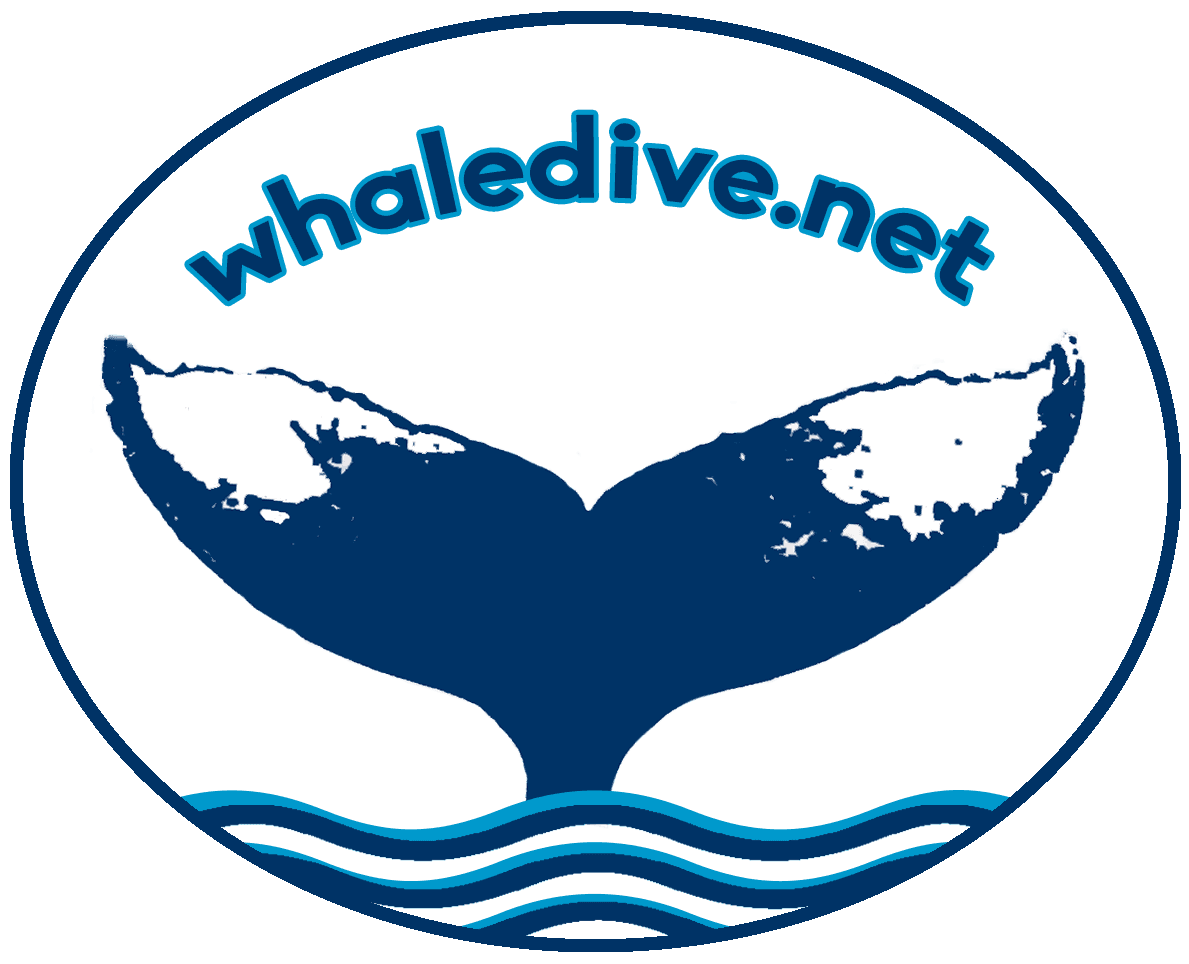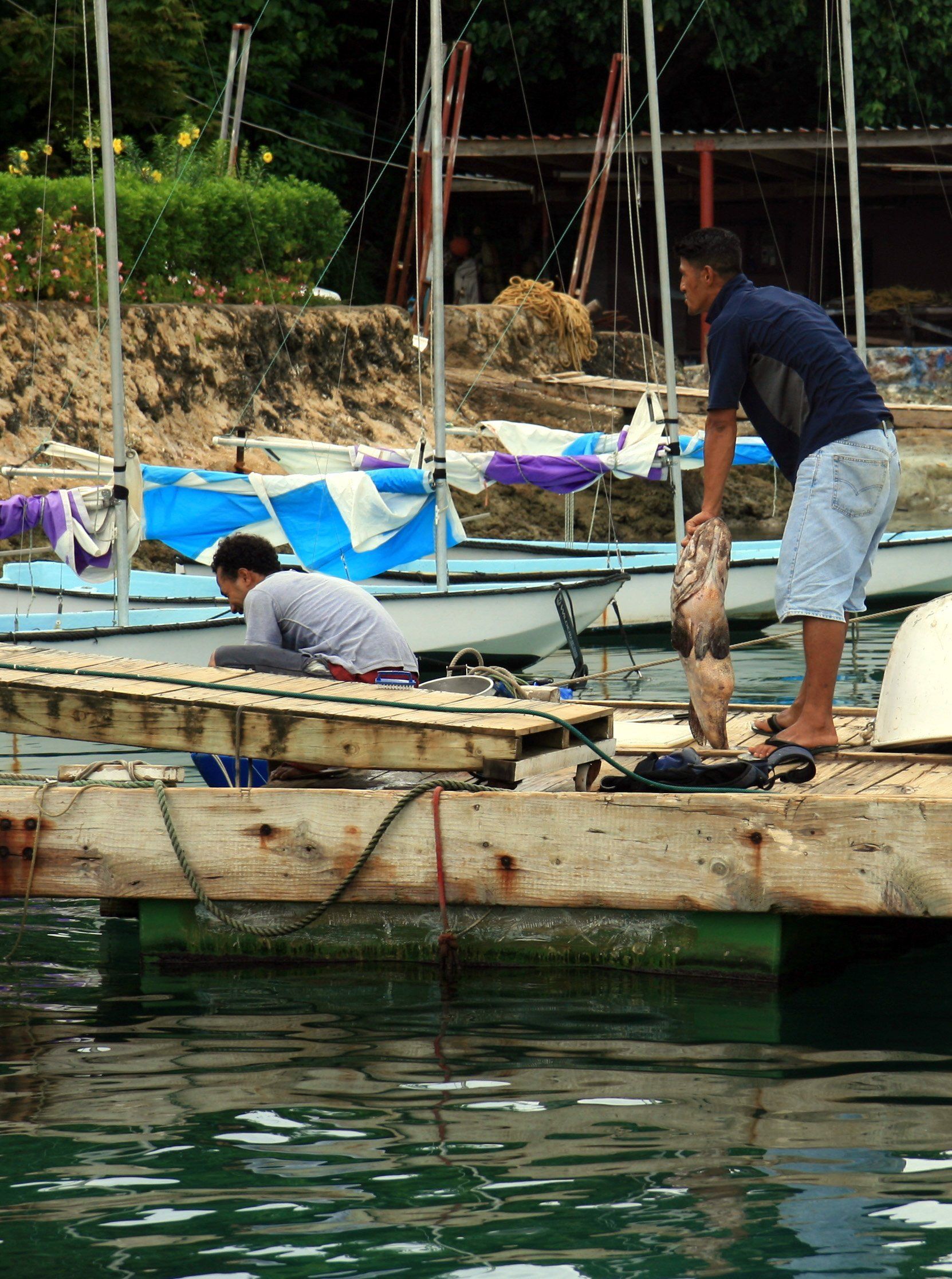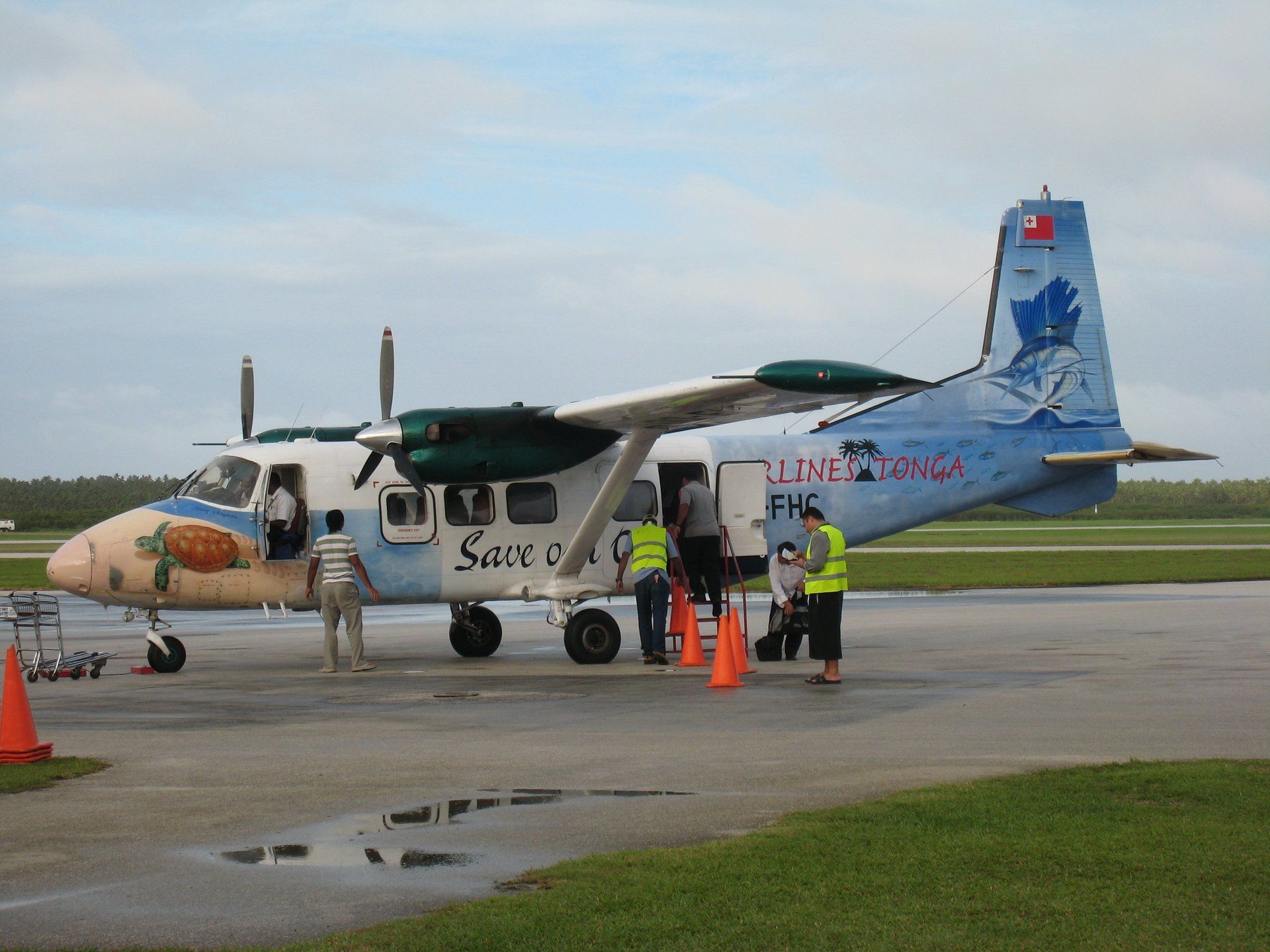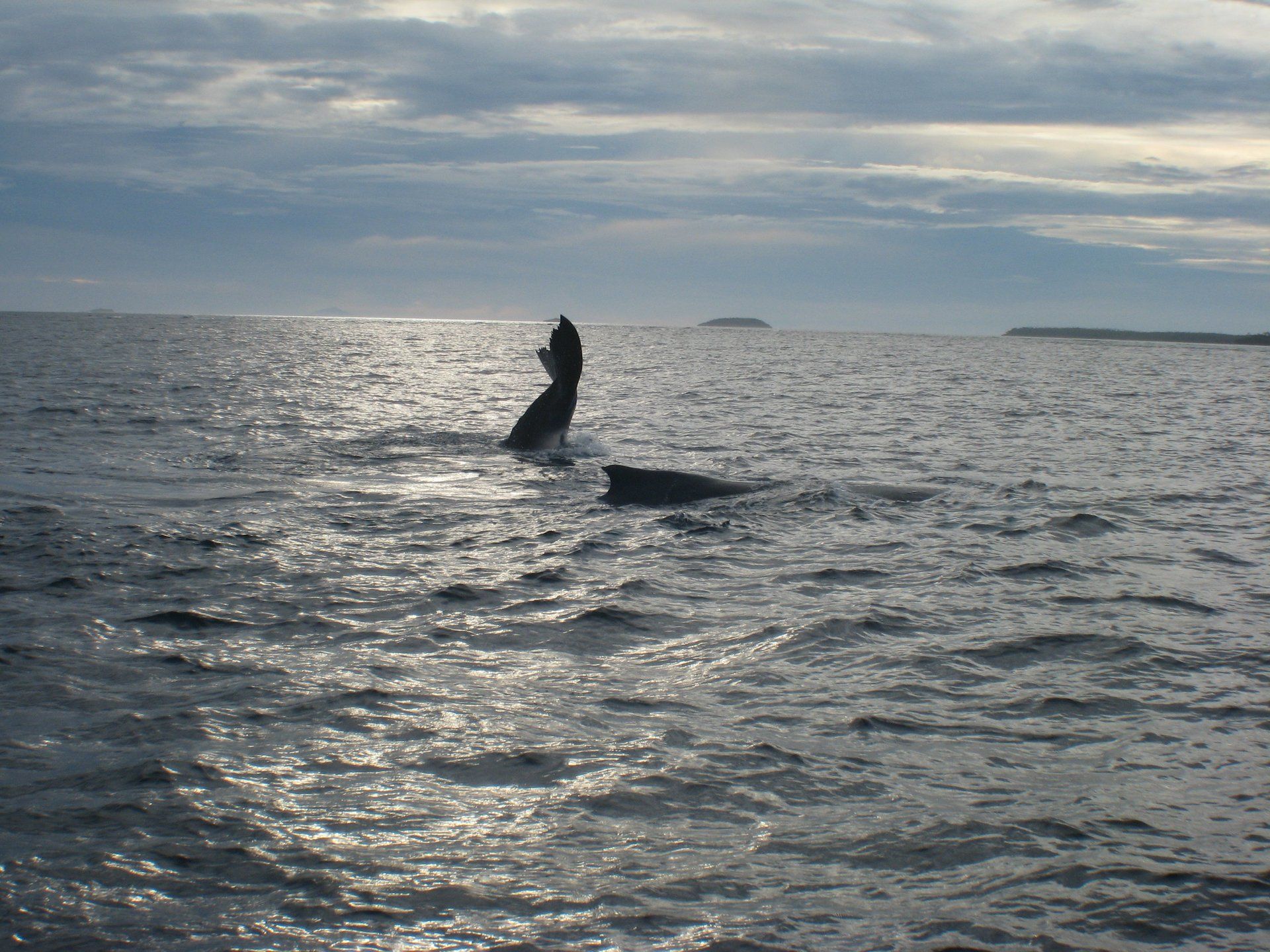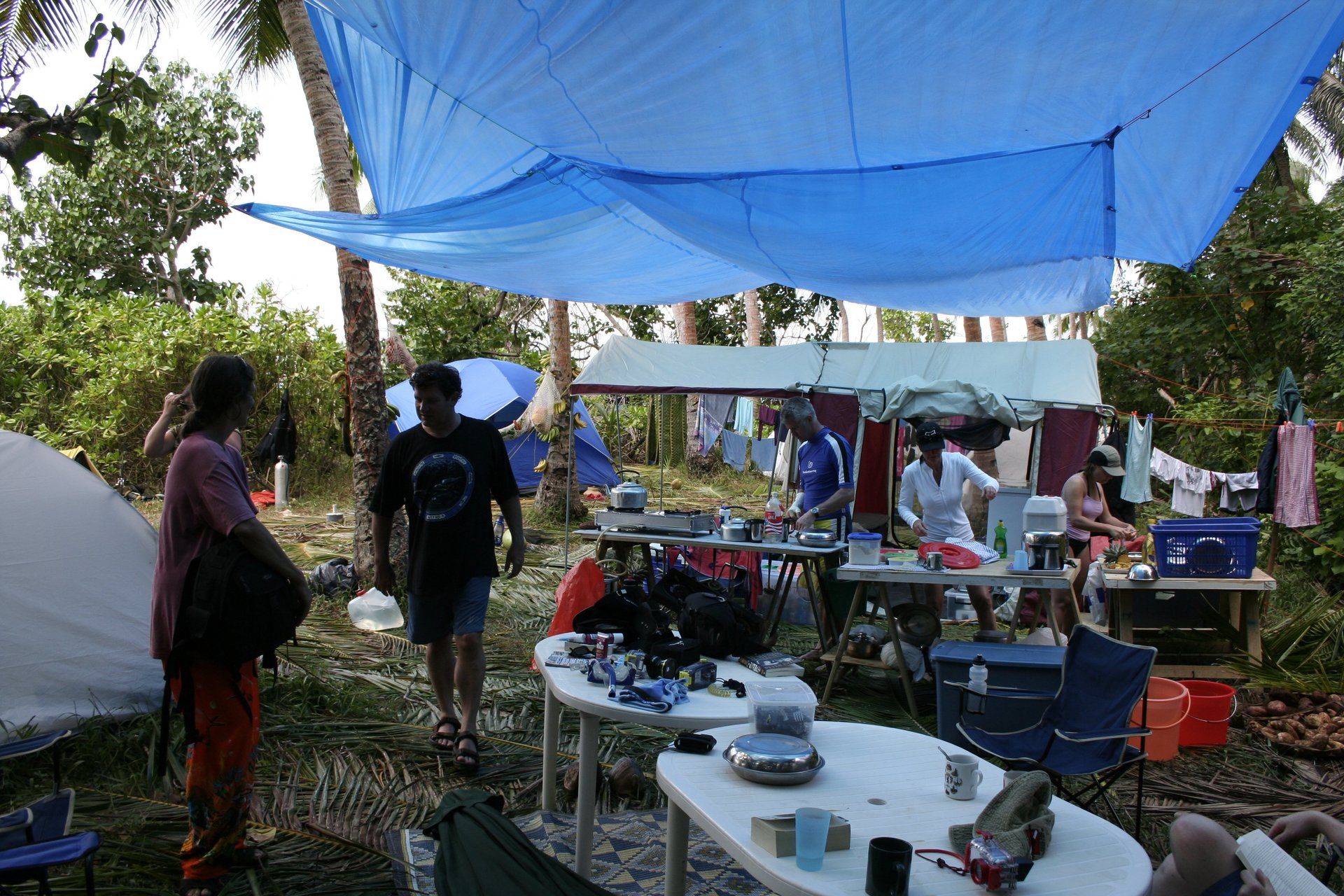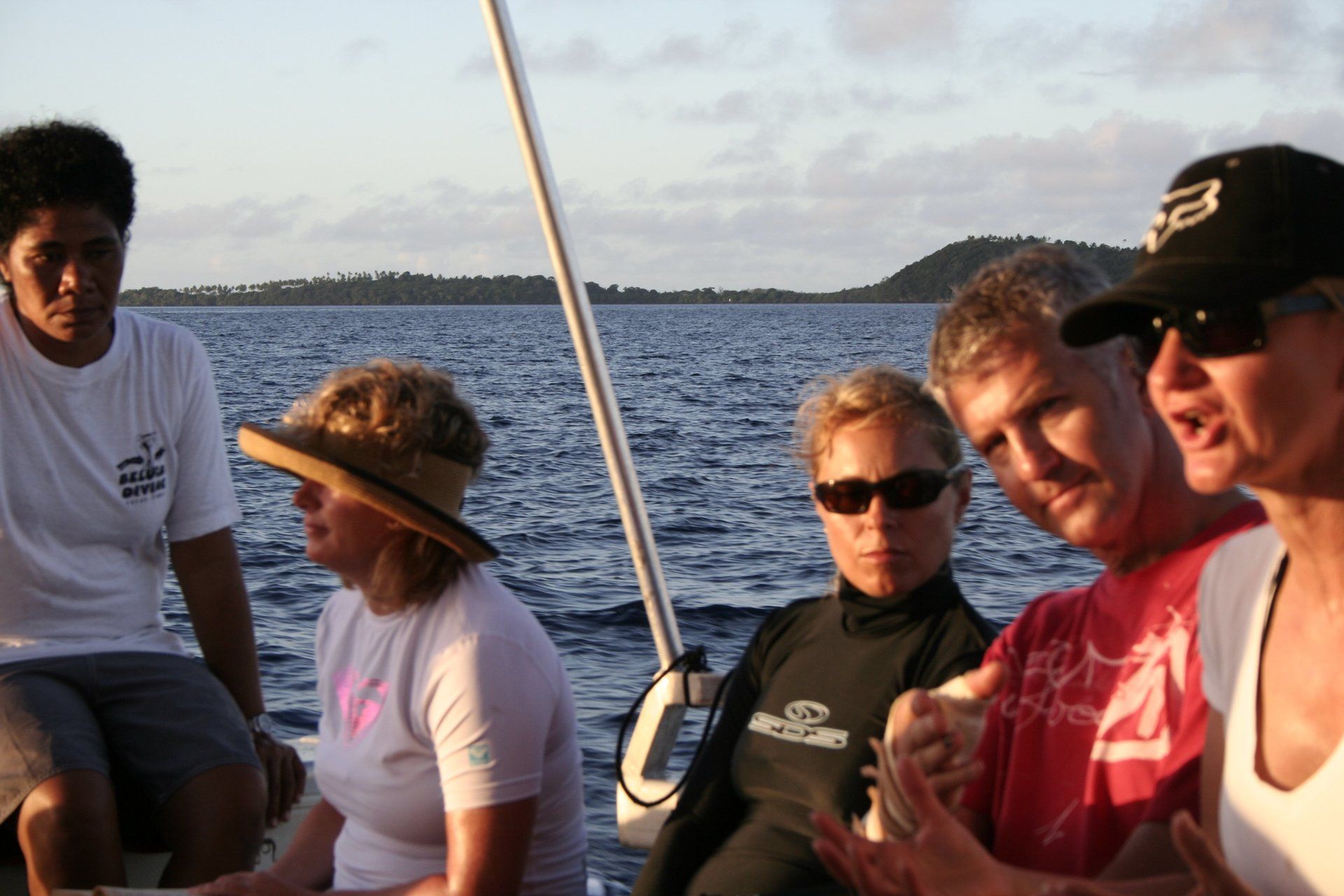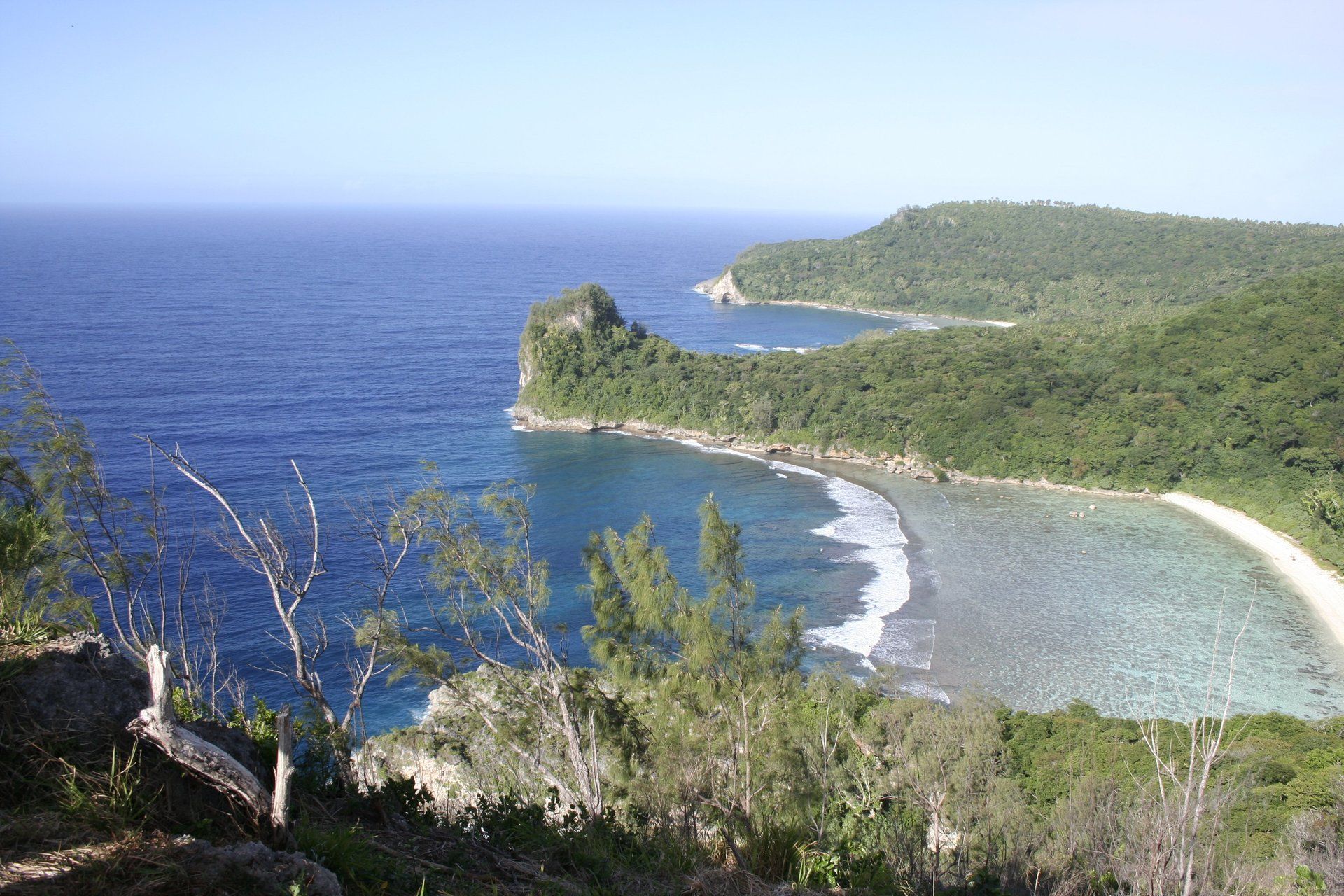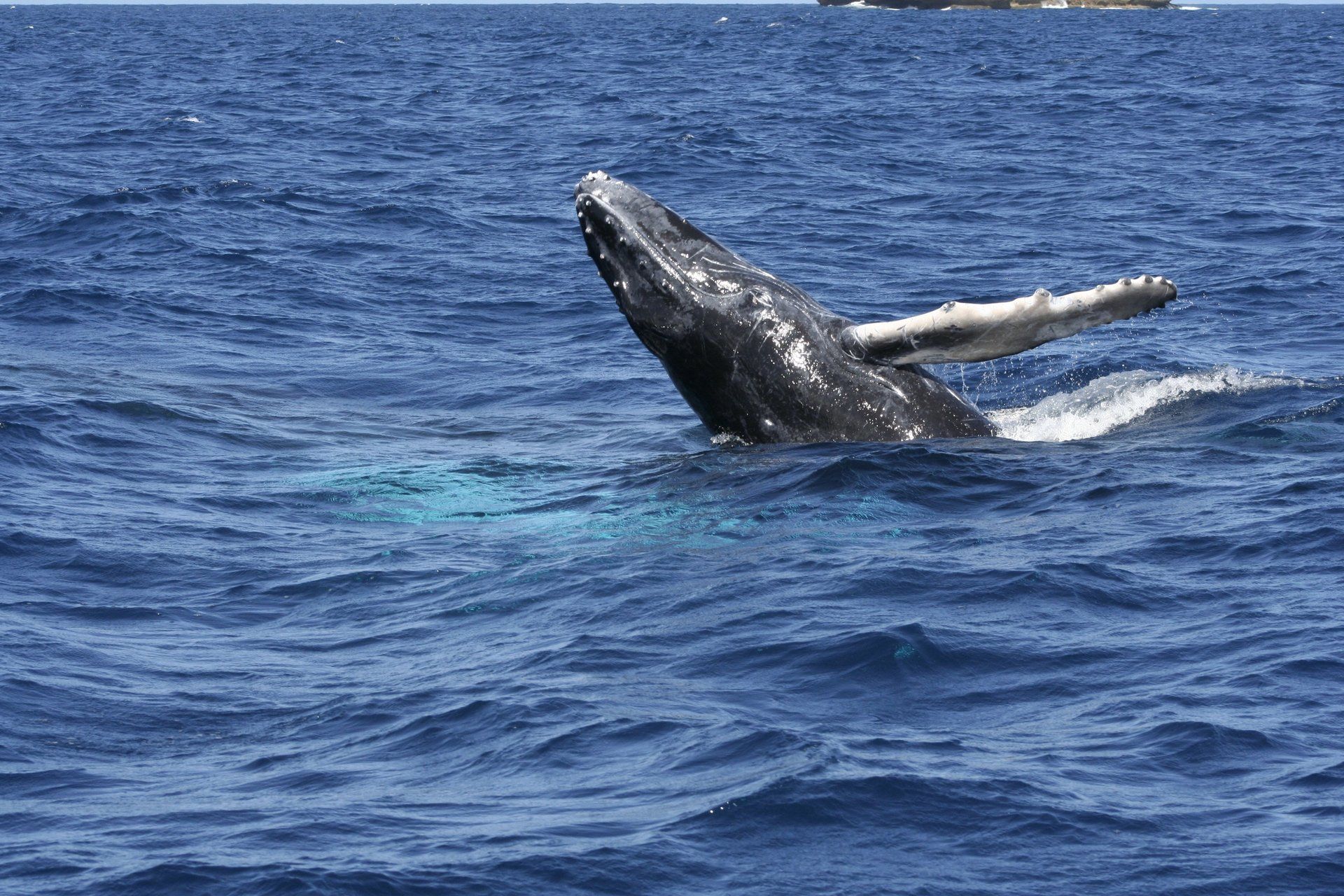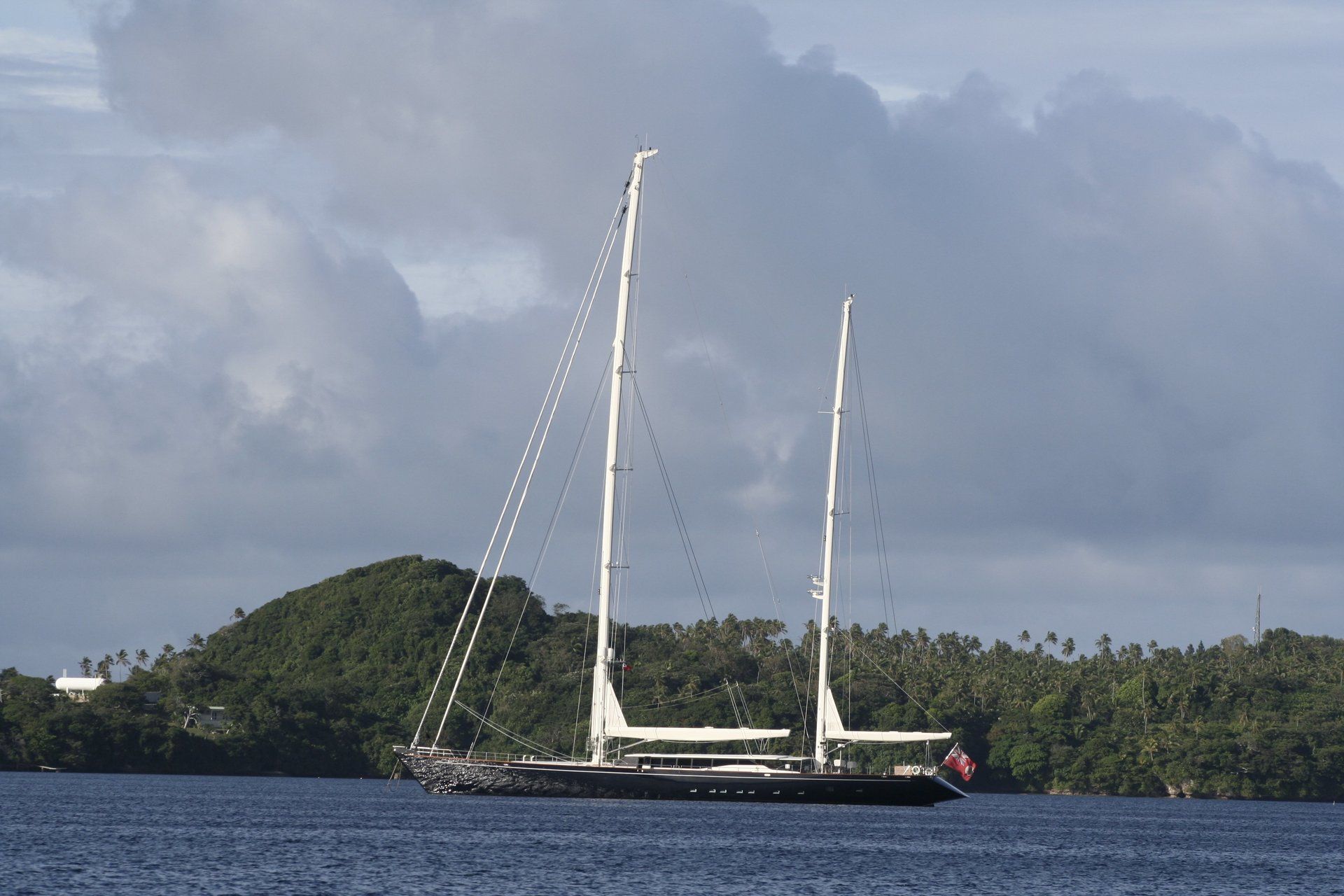2007
Swimming with Humpback Whales in Vava’u – Tonga
By Ron Hunter of Dive Forster at Fisherman’s Wharf
During August through September and again in October 2007, groups of Scuba divers and snorkelers from Dive Forster at Fisherman’s Wharf ventured to Vava’u, the northernmost archipelago of the Kingdom of Tonga.
This was our sixth consecutive year of escorting groups to experience the ultimate of in water encounters, swimming with the Humpback Whales of Vava’u. For some of our travellers this was to be their third, fourth and even fifth year in a row of touring to Vava’u with us.
Each year that we have swum with the Whales of Vava’u, every day has been a special experience. In 2007 we ventured out on twenty-six days to Swim with the Whales and there was only one day out of this twenty-six that we did not get in the water with them. Each of these days with the Whales was once again special and different to all other days. However there were a few absolutely amazing, outstanding days, with whale encounters that went far beyond what we could have ever imagined.
On one occasion we came upon a mother Humpback and her brand new calf that had been born the preceding night. The baby would have been only twelve to eighteen hours old and was still soft, with her dorsal fin bent over and was blotchy and pale in colour. The mother was nudging her baby with her nose whilst our boat stood-off around 200 metres away. The little calf then, to our amazement, began to attempt a number of breaches around her mother. I had always believed that this essential survival skill was a “learned” activity, but with this calf being so young I now tend to think that it may be an inherent instinct. We were all enthralled by this tentative breaching display, this then turned to our utter amazement when the mother gently nudged her calf towards our stationary boat. Five of us quietly slipped into the water and finned slowly towards the pair, we stopped around thirty metres away from the boat as the mother continued to nudge her baby towards us, we could clearly see the approaching Whales around fifty metres away in the gin-clear, blue water. The mother stopped her approach around twenty metres from us, her newborn calf, however, continued on and curiously approached us and circled us as close as three metres away, all the while gazing at us curiously with her big, intelligent eyes. The calf would return every few minutes to her mother, re-establishing contact, before swimming back to our group of snorkelers. We took these pauses in the interaction as an opportunity to change over the people in the water, so that everyone could enjoy this special experience. This was a very emotional encounter for us all, to have a mother Humpback Whale trust us so implicitly with her newborn calf was truly humbling, and to experience and share the joy and exuberance of this intelligent being celebrating her new life was to make us feel as one with these magnificent mammals.
We were to experience another fantastic morning of encounters with this family, for five days later, we came upon them at rest in the shallow, sheltered waters of North Bay. A group of five of our snorkelers slipped into the water and quietly approached the pair, the calf was still quite pale and blotchy in colour, but she had certainly grown markedly from feeding on the rich, fatty, yoghurt-like milk that her mother was expressing* for her, The calf, once again, approached our group of snorkelers, her swimming skills had noticeably improved, she was doing “barrel-rolls” as she swam around the group before returning to her mother who was resting half asleep**, aware of our presence and totally relaxed with it. We now saw another Whale with the pair; an “escort” had joined the new family. This escort was probably a prospective male suitor and displayed the typical behaviour of a Humpback Whale escort, of not really being interested in the snorkelers, but gently and insistently moving the mother Humpback along every fifteen minutes or so. Our encounters with the family were now limited to the time the escort allowed the mother to rest between moves.
I had planned, prior to our arrival in Vava’u in 2007, to attempt to communicate with the Whales by “singing” to them, the idea for this sprang from the success we had had singing to wild dolphins off Forster NSW, I wasn’t sure how, or if it would work with the Humpback Whales of Vava’u, but nothing ventured nothing gained.
During the morning at North Bay, about one hour from when we first saw them, I was leading a group of four snorkelers in the water, we were just floating around ten metres away from the resting mother, with her curious calf swimming around us, eyeballing us, when the escort came from beneath the mother and started to lead her and her calf away again. As the trio of Whales began to move towards the deeper water I started “singing” to them. The mother Humpback with her calf tucked under her chin turned away from us, so as not to bump us, and circled back towards us, turning in her own length to position herself, stationary, around six metres away, eyeballing us, and I felt me in particular, as I continued the noise that passes for singing by someone who can’t sing a note. The calf was now positioned on her mother’s nose, also eyeballing us, and here they hovered, motionless, for ten minutes or more, appearing to be as fascinated by us as we were of them. The escort, who was obviously not tone deaf, showed no interest at all. We now swapped groups of snorkelers in the water with the family of Whales, with the new group taking up the “song”, which would immediately cause the mother to stop moving restively and once again float just metres away from us. We were to swim with this family of Whales for the next three hours, all of us enjoying one of the most memorable mornings in Planet Ocean.
I am not sure if you could call what we were doing “communicating”, but it certainly worked in the most fabulous of ways with these extremely cognisant, very intelligent, gentle giants.
Throughout my series of articles on Swimming with the Humpback Whales of Vava’u I have made mention of how careful and agile the Whales are when we are in the water with them. A fully grown female Humpback Whale is up to eighteen metres long and can weigh as much as fifty tonnes, they can attain a burst speed of thirty knots and with just three strokes of their powerful tails can launch their entire body clear of the water when they breach. They are also very shy and sensitive to sudden movements and noise and must be approached with care and respect otherwise they will just swim off. When we are in the water with them they are very aware of us being there, and if we approach them slowly, quietly and with respect they will afford us the same care and respect when manoeuvring their massive bodies around us. They are very aware of where we are and will pull a pectoral fin so as not to brush us when they glide by, they will cease moving their huge tails so as not to bump us.
Whilst we always endeavour to stay together as compact group when in the water with the Whales, this does not always work out. We have had one Whale carefully but insistently break our compact group up by swimming right up to us, nodding her head side to side until we moved apart and was not satisfied until she had split our group up into single swimmers scattered all over the ocean.
On another occasion we had not managed to stay together as group, and a single adolescent Whale honed his manoeuvring skills by swimming right up to each individual snorkeler, before ducking under them firstly in an upright position, then on his side, then on his back, all the while inquisitively watching us with his huge eyes. This same Whale “spy hopped” between us, swimming vertically in the water and lifting his huge head and eyes clear of the surface, and then slowly pirouetting to gaze at us with an above water view. Absolutely extraordinary behaviour!
In 2007 I had a family of four people from Sydney travel to Vava’u with me. John, Liz and their two daughters Bridgette and Pippa were to experience some of the most amazing Whale encounters. The most amazing and memorable of these was when Liz and eight-year old Pippa were two of four snorkelers in the water with Kona, one of our Tongan Whale guides. Theirs was the second group of snorkelers into the water to swim with two adolescent Whales that were frolicking, rolling and swimming up to and around the compact group of snorkelers. This interaction had been underway for around ten minutes when a third adolescent Whale came dramatically on the scene. Rocketing up from the deep blue and bursting through the surface around five metres away from the snorkelers, he launched himself in a thirty-five tonne breach, completely clear of water, landing away from the swimmers. A huge wave of water from the Whale’s landing washed over the snorkelling group. In Pippa’s own words “it was awesome”. The snorkelers all said that the Whale had watched them as it rocketed towards the ocean’s surface, and they had not at all felt threatened or in danger. The Whale knew exactly where the snorkelers were and once again showed great skill and care in not “bumping” anyone. An interesting story for Pippa at “show and tell” back at her school!
These are just a few of the highlights from our 2007 tours, all of our twenty-five days swimming with the Whales were memorable, each time the boat would be abuzz with people recounting their experiences. Everyone took home cherished memories of their time with the Humpback Whales of Vava’u. And for many the siren song of the Whales is calling them back to Vava’u to once again enjoy one of life’s greatest wildlife encounters.
Vava’u is not just about Swimming with the Humpback Whales. The SCUBA diving there is very good, with huge underwater caverns, the bluest water on the planet, pristine hard coral gardens and a vast array of small underwater life forms.
Vava’u is also about fun, with a great selection of waterfront cafes and bars where visitors can mingle with travelling yachtsman, celebrities and of course the friendliest people anywhere, the native Tongans.
Vava’u is, I believe, the best destination in the Pacific, it has so much to offer and so many activities to enjoy and best of all there is the opportunity to Swim with the Humpback Whales.
*Humpback calves do not actually suckle from their mother, but get close to their mother’s teat which is located in a ventricle under the belly. In their first few days of life a calf will get the milk from their mother from a pocket of air that their mother has trapped in this area, so that her calf can consume the milk without having o sieve it from the salt water. Very quickly the calves will learn to feed on the globules of rich milk that are exuded into the water, sieving from the salt water behind their baleen plates by expelling the water from their mouth and expanded throats with their powerful tongue. Humpback calves will gain weight at the rate of a kilo an hour on this diet of rich mother’s milk.
** Humpback Whales, like all cetaceans, sleep only half a hemisphere of their brain at any one time, when the left hemisphere is asleep the right eye is shut and vice-versa.
